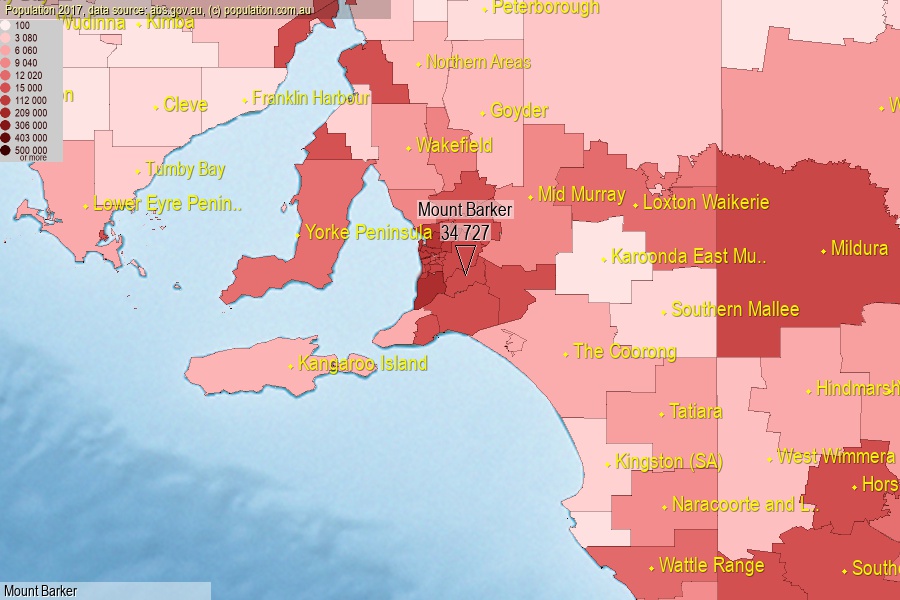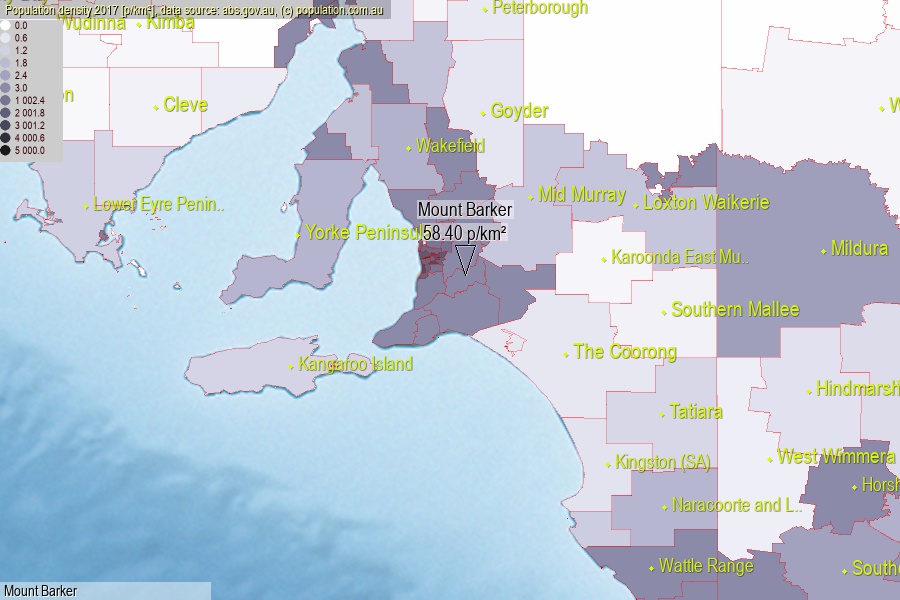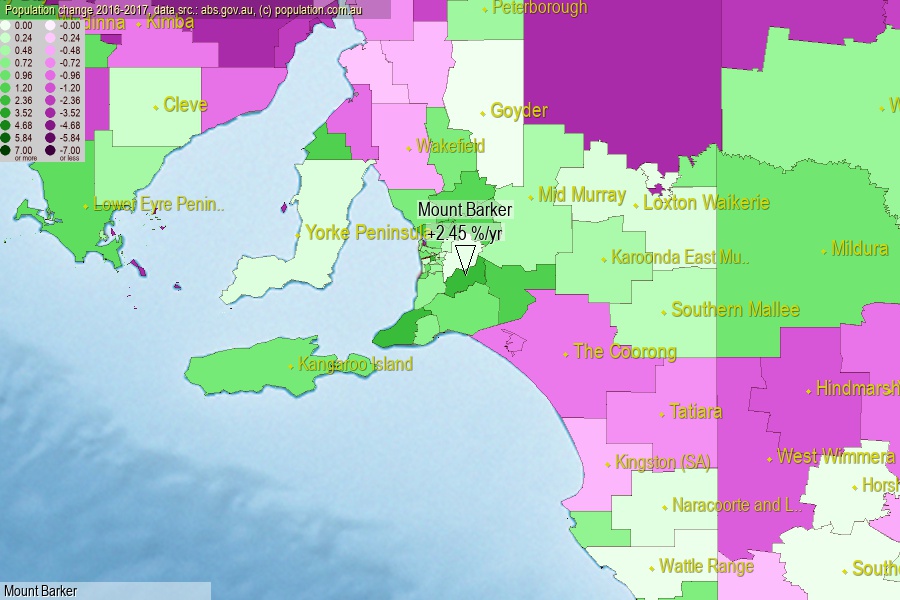 population.com.au
population.com.auLast official estimated population of Mount Barker District Council (as Local Government Area) was 34 727 people (on 2017-06-30)[2]. This was 0.14% of total Australian population and 2.003% of SA population. Area of Mount Barker is 594.60 km², in this year population density was 58.40 p/km² . If population growth rate would be same as in period 2016-2017 (+2.45%/yr), Mount Barker population in 2025 would be 42 142. [0]



Click to enlarge. Mount Barker is located in the center of the images.
Population [people], population density [p./km²] and population change [%/year] [2]
[1996-2001] +1.99 %/Y
[2001-2002] +3.22 %/Y
[2002-2003] +2.93 %/Y
[2003-2004] +3.07 %/Y
[2004-2005] +3.06 %/Y
[2005-2006] +2.57 %/Y
[2006-2007] +2.18 %/Y
[2007-2008] +2.52 %/Y
[2008-2009] +2.34 %/Y
[2009-2010] +2.06 %/Y
[2010-2011] +1.27 %/Y
[2011-2012] +2.27 %/Y
[2012-2013] +1.73 %/Y
[2013-2014] +2.55 %/Y
[2014-2015] +2.47 %/Y
[2015-2016] +2.14 %/Y
[2016-2017] +2.45 %/Y
[0] Calculated with linear interpolation from officially estimated population
[1] Read more about LGA and Australian Statistical Geography Standard (ASGS) on abs.gov.au
[2] Population data from Australian Bureau of Statistics (Population and density: 2017; change: 2016-2017)
[3] Digital Boundaries: Australian Statistical Geography Standard (ASGS) 2016.